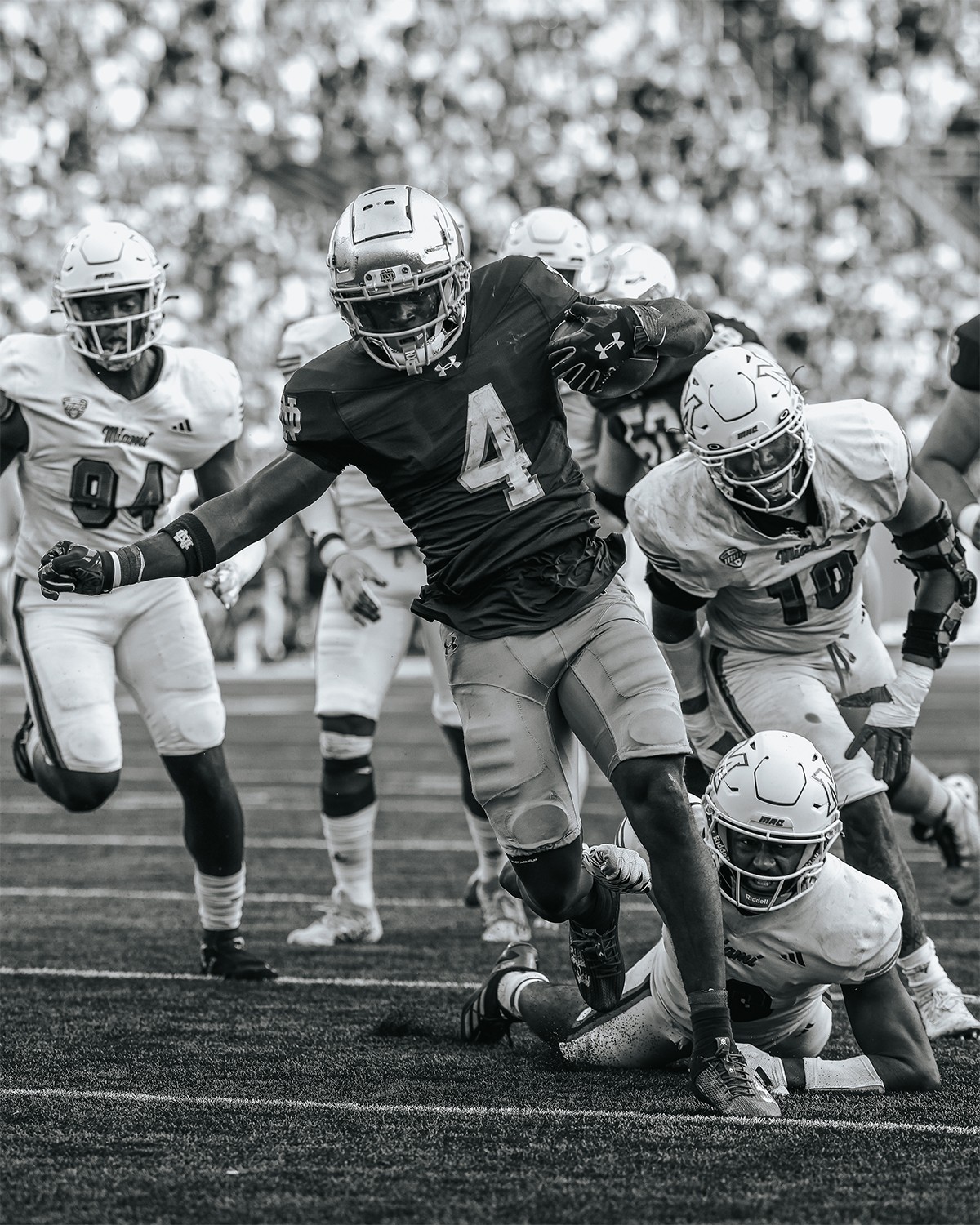BLACK & WHITE, BOLD & BRILLIANT: Vivid Moments from the 2024-25 Season That Proved Color Was Never Needed to Tell the Story
The 2024-25 season, in all its drama, grit, and glory, didn’t need the shimmer of color to leave a lasting mark. Stripped of hues and tones, the year’s defining moments—frozen in black and white—offered something even more profound. They served as a powerful reminder that the heart of sport, the soul of struggle, and the pulse of emotion don’t require visual enhancement. The absence of color did not dull the emotion but sharpened it, carving the year’s story deeper into the minds of fans, players, and dreamers alike. These monochrome snapshots became windows to timeless truths, moments that resonated louder than any broadcast jingle or highlight reel.
It began in the dead of winter, when a snow-covered field hosted a football game that would become the stuff of legends. The image of two linemen—mud-caked and breath visible in the cold—clashing in mid-air became the season’s emblem of perseverance. The photo, devoid of color, highlighted every crease of exertion and every spray of earth. You could practically hear the grunt, feel the hit, sense the stakes. That one shot told a thousand stories, each in stark blacks, piercing whites, and the infinite shades in between.
Basketball gave us a moment just as poignant. In an empty gym, a senior guard stood still at midcourt, arms raised after hitting a game-winning three. The background blurred in black and white, crowdless but somehow loud. Her expression—equal parts relief, disbelief, and pure joy—jumped off the page without needing orange leather or a glowing scoreboard. This was triumph in its rawest form. The photo was shared thousands of times, not for its colors, but for its truth. It reminded us why we love the game—because sometimes the quietest victories are the loudest in our hearts.
Elsewhere, in a wrestling arena humming with tension, a black-and-white image of two athletes locked in a desperate grapple captured more than physical struggle. It revealed the internal war of self-doubt, determination, and resilience. The tightly gripped wrists, the beads of sweat, the slight tremble in the legs—none of it needed to be colorized. The scene was universal. It could have been 2025 or 1925. That’s the power of monochrome—it collapses time and immortalizes spirit.
Even off the field, black and white did the talking. A snapshot of a coach comforting a benched player spoke volumes. In color, it would have shown the crimson jersey, the polished court, the fluorescent lighting. But in black and white, it focused on the gesture: a hand on the shoulder, eyes locked in empathy, a message being delivered in silence. It wasn’t about stats or standings. It was about the human condition—the raw emotions that bind competitors together beyond wins and losses.
Then there was the storm. Literally. One of the most iconic images of the year came during a track meet disrupted by a sudden downpour. The rain was sideways. Athletes were soaked. Some huddled under tents, others sprinted through the chaos. But the image that stuck was of a hurdler mid-leap, silhouette frozen against a backdrop of wind and water. Her hair flew backward, her arms reached out, her knees tucked high. It was primal. It was poetic. It was what sport is at its best: defiant, beautiful, and uncontainable.
The black and white treatment of these moments added weight, stripped away distractions, and brought clarity to the chaotic. A photo of a soccer team huddled before a penalty shootout didn’t need bright kits or sponsor logos. What mattered were the linked arms, the bowed heads, the squeezed eyes. It was a prayer disguised as a formation. No need for caption. The stakes lived in the silence.
In baseball, an aging pitcher’s final pitch was captured mid-motion, his face a map of years and pain and pride. His fingers just released the ball, the crowd behind him a blur of ghosts and gratitude. The black and white softened the crowd, sharpened the pitcher. It told a story of legacy, of finality, of one man giving all he had one last time. No need for fireworks. The emotion was loud enough.
One of the most tender moments came from a wheelchair basketball tournament. A young athlete, having just won her first national title, sat courtside with her head buried in her mother’s lap. The photo, taken in perfect contrast, was less about celebration and more about connection. The game was over. The glory was earned. But the real reward was comfort and love. Black and white didn’t just capture the scene—it elevated it. Color might have been too loud for such a quiet, perfect moment.
Every sport, every setting gave us these moments. A fencer adjusting her mask before the bout. A swimmer’s outstretched fingers reaching for the wall. A runner collapsing after breaking a personal record. A coach’s face, buried in hands after a crushing loss. A fan, teary-eyed in the stands, clutching a photo of a late loved one during senior night. Each memory, each image a still from a movie too beautiful to alter.
What made these images timeless was their grounding in shared humanity. Color tells us when something happened. Black and white tells us why it mattered. In the year of big data, live stats, and augmented broadcasts, the most powerful moments were those captured in stillness, without embellishment, without noise. Just emotion, commitment, and truth. Just eyes, sweat, hands, and heart.
It’s ironic, perhaps, that in an age of ultra-high-definition everything, the most memorable visuals of the 2024-25 season were ones that looked like they could hang on a museum wall or live in a forgotten photo album. The images weren’t chasing trends or hashtags. They were chasing timelessness. And they caught it.
As the season unfolded—from buzzer-beaters to blowouts, heartbreak to hardware—one thing became clear: color is optional. Emotion isn’t. The photos that etched themselves into the collective consciousness of the sports world did so without needing vibrant reds or deep blues. They relied on light and shadow, on motion and stillness, on facial expressions and body language. They reminded us that even in the flashiest era of sports, the soul of the game still lives in its simplest moments.
This isn’t to say color doesn’t have its place. It does. But when stripped away, when reduced to its most essential elements, sport reveals its truest self. There’s no hiding in black and white. There’s no illusion. Only reality. And in that truth, there is beauty.
As the dust settles on the 2024-25 campaign, the highlight reels will be replayed, the stats dissected, the champions remembered. But somewhere, tucked away in archives and hearts, will be the black-and-white frames—the quiet guardians of memory. These images will not age. They will not fade. They will remain, powerful and pure, standing as evidence that sometimes, the brightest moments need no color at all.



